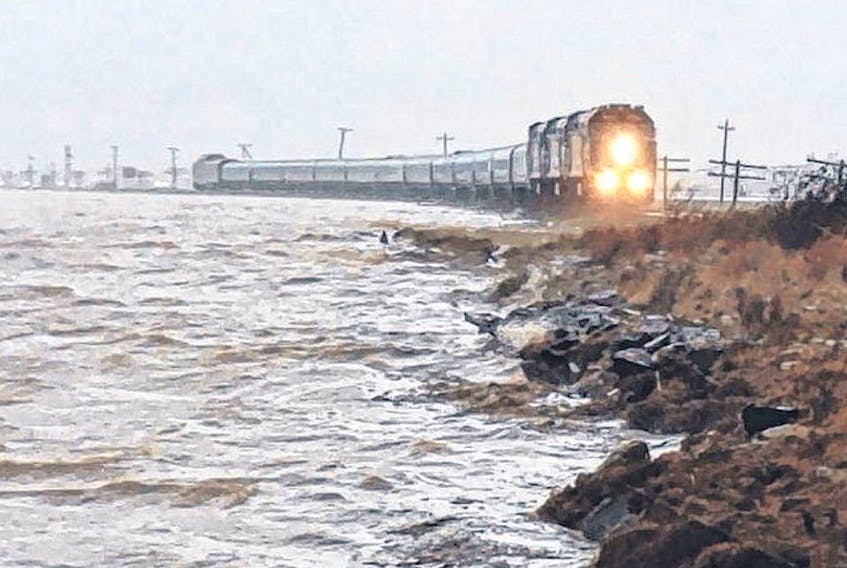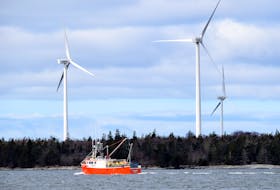Cumberland-Colchester MP Bill Casey said he’s concerned that a perfect storm of conditions could spell disaster for the narrow swatch of land that connects Nova Scotia to the rest of North America.
Casey has long made his concerns known about the threat of rising sea levels to the Isthmus of Chignecto, worries that he said are worsened during storms like the one on Thursday.
“Right now, if a big storm coordinated with the high tides and wind in the wrong direction, I think we could have a breach now,” Casey told The Chronicle Herald just a few hours after visiting the area Thursday before the winds strengthened.
“The biggest concern is the only thing holding the Bay of Fundy, the entire Bay of Fundy, out of the Isthmus of Chignecto is the CN rail line. It’s acting as a breakwater, which it was never intended to be. . . . And if that were to flood, the highway would flood, too, the four-lane TCH (Trans-Canada Highway) is right behind the rail line,” Casey said.
“Plus, it would flood the marshes with salt water, which would render them useless for agriculture for a long time.”
His fears aren’t unfounded — scientists and experts, including the United Nations
panel on climate change, identified the Bay of Fundy coastal area as one of the two regions in North America that would be most vulnerable in the case of rising sea levels.
Other than the threat to nearby farmers, whose lands are protected by dikes built by Acadian settlers in the 1700s, Casey said, any damage to transportation links would have a major impact on the port of Halifax. He said an estimated $50 million in trade goes through the isthmus every day.
“The big threat here is if that rail line goes, then all the transportation links from Nova Scotia and Newfoundland to the rest of Canada are interrupted, because . . . the containers that are unloaded in Halifax, every single one of them, goes across that line,” he said.
“If we lose that rail line even for a short time, Halifax’s reputation will be damaged. From our point of view, we can’t allow it to be breached. We’ve got to address it before that happens.”
Casey said he’s been pushing the issue of a permanent fix at the federal government level and said he’s expecting some attention to the issue soon.
“The province of Nova Scotia and the province of New Brunswick have applied to the Department of Transport for funding to assemble the report on the options and the possibilities and the potential partners on how to approach this challenge,” he said.
“That request is in now and I’m optimistic it will get a positive response, and then we can move on with finding out what will be the best solution, and then move on with the solution.”
He said the fix likely won’t come cheap and will involve different levels of government working together to address the issue.
“We have the longest coastline in the world and rising sea levels are affecting everybody, but everything that happens on the Bay of Fundy is exaggerated, the rising sea levels will have a bigger impact on the Bay of Fundy than anywhere else,” he said.









